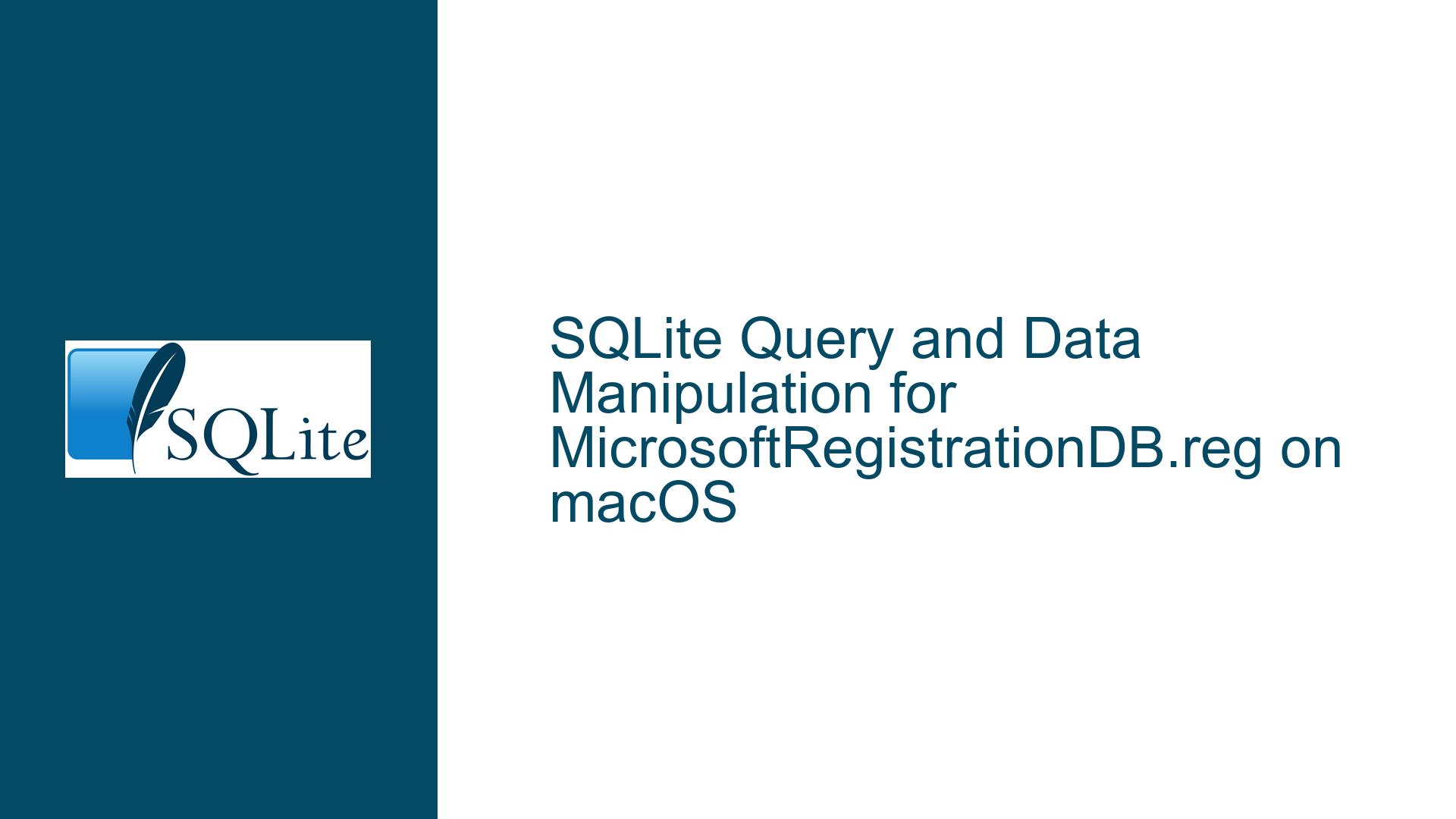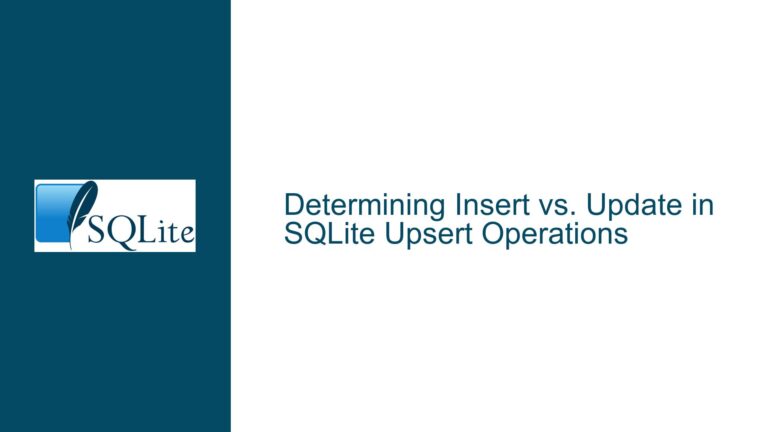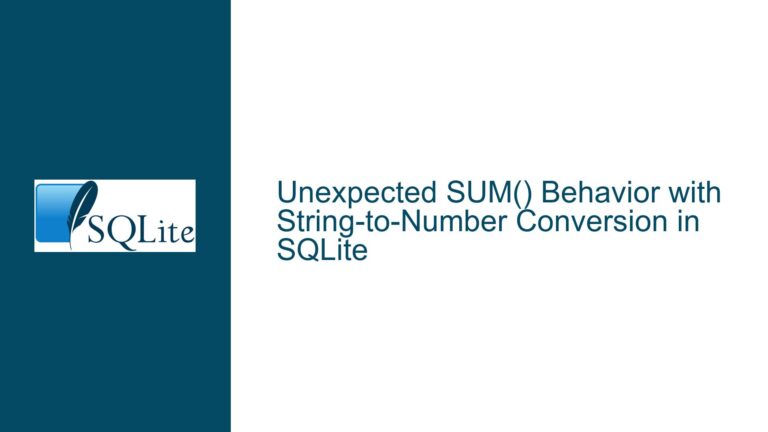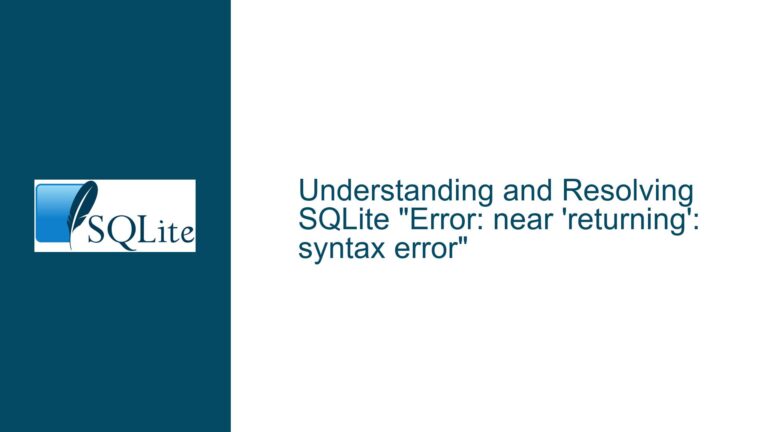SQLite Query and Data Manipulation for MicrosoftRegistrationDB.reg on macOS
Understanding the Schema and Data Structure of MicrosoftRegistrationDB.reg
The core issue revolves around querying and manipulating data within the MicrosoftRegistrationDB.reg SQLite database on macOS. This database is used to store preferences and registration information for Microsoft Office 365 applications. The database contains two primary tables: HKEY_CURRENT_USER and HKEY_CURRENT_USER_values. The HKEY_CURRENT_USER table stores hierarchical node information, while the HKEY_CURRENT_USER_values table stores key-value pairs associated with each node. The schema is as follows:
CREATE TABLE HKEY_CURRENT_USER (
node_id INTEGER PRIMARY KEY ASC,
parent_id INTEGER,
name TEXT COLLATE nocase,
write_time TIMESTAMP,
UNIQUE (parent_id, name)
);
CREATE TABLE HKEY_CURRENT_USER_values (
node_id INTEGER,
name TEXT COLLATE nocase,
type INTEGER,
value TEXT,
UNIQUE (node_id, name)
);
CREATE TABLE db_metadata (
schema_ver INTEGER,
min_schema_ver INTEGER,
cache_table BINARY
);
The HKEY_CURRENT_USER_values table contains columns such as node_id, name, type, and value. The name column represents the key (e.g., DocumentUrl, Application, FileName), and the value column stores the corresponding data. The node_id column links these key-value pairs to specific nodes in the HKEY_CURRENT_USER table.
Challenges in Querying and Modifying Specific Data
The primary challenges are twofold: extracting only the DocumentUrl values for each item and deleting records associated with a specific application (e.g., Application = "Word"). Additionally, there is a need to handle variations in file path formats, where some paths begin with file:/// and others with /.
To extract only the DocumentUrl values, a query must filter the HKEY_CURRENT_USER_values table for rows where name = 'DocumentUrl'. However, since each DocumentUrl is associated with a specific node_id, the query must also ensure that the results are grouped or structured in a meaningful way.
For deleting records associated with a specific application, the query must first identify all node_id values where name = 'Application' and value = 'Word'. These node_id values can then be used to delete corresponding rows in the HKEY_CURRENT_USER_values table.
Querying and Modifying Data in SQLite
Extracting DocumentUrl Values
To extract only the DocumentUrl values, the following SQL query can be used:
SELECT value
FROM HKEY_CURRENT_USER_values
WHERE name = 'DocumentUrl';
This query retrieves all rows where the name column is DocumentUrl. However, this approach does not associate the DocumentUrl values with their corresponding node_id or other related data. To include the node_id and other relevant fields, the query can be modified as follows:
SELECT node_id, value AS DocumentUrl
FROM HKEY_CURRENT_USER_values
WHERE name = 'DocumentUrl';
This query returns both the node_id and the DocumentUrl value, providing a clearer context for each file path.
Handling Variations in File Path Formats
The file paths in the DocumentUrl column may begin with either file:/// or /. To standardize these paths, SQLite’s string manipulation functions can be used. For example, the REPLACE function can remove the file:/// prefix:
SELECT node_id, REPLACE(value, 'file://', '') AS DocumentUrl
FROM HKEY_CURRENT_USER_values
WHERE name = 'DocumentUrl';
This query ensures that all file paths are returned without the file:// prefix, making them consistent for further processing.
Deleting Records for a Specific Application
To delete records associated with a specific application (e.g., Application = "Word"), the following steps are required:
- Identify the
node_idvalues wherename = 'Application'andvalue = 'Word'. - Use these
node_idvalues to delete corresponding rows in theHKEY_CURRENT_USER_valuestable.
The following query identifies the relevant node_id values:
SELECT node_id
FROM HKEY_CURRENT_USER_values
WHERE name = 'Application' AND value = 'Word';
Once the node_id values are identified, they can be used to delete the corresponding rows:
DELETE FROM HKEY_CURRENT_USER_values
WHERE node_id IN (
SELECT node_id
FROM HKEY_CURRENT_USER_values
WHERE name = 'Application' AND value = 'Word'
);
This query deletes all rows in the HKEY_CURRENT_USER_values table where the node_id matches those associated with the Application = "Word" condition.
Replacing the Entire List of Recent Documents
If the goal is to replace the entire list of recent documents with a cleaned list, the following approach can be used:
- Extract the current list of recent documents.
- Clean the list using regex or other string manipulation techniques.
- Delete the existing records.
- Insert the cleaned records.
For example, to clean the DocumentUrl values and replace them, the following steps can be taken:
-- Step 1: Extract the current list
CREATE TEMPORARY TABLE temp_recent_docs AS
SELECT node_id, name, type, value
FROM HKEY_CURRENT_USER_values
WHERE name = 'DocumentUrl';
-- Step 2: Clean the list (example: remove 'file://' prefix)
UPDATE temp_recent_docs
SET value = REPLACE(value, 'file://', '');
-- Step 3: Delete the existing records
DELETE FROM HKEY_CURRENT_USER_values
WHERE name = 'DocumentUrl';
-- Step 4: Insert the cleaned records
INSERT INTO HKEY_CURRENT_USER_values (node_id, name, type, value)
SELECT node_id, name, type, value
FROM temp_recent_docs;
-- Clean up
DROP TABLE temp_recent_docs;
This approach ensures that the list of recent documents is cleaned and updated in a controlled manner.
Best Practices for SQLite Data Manipulation
When working with SQLite databases, especially for tasks like querying and modifying data, it is essential to follow best practices to ensure efficiency and accuracy:
Backup the Database: Before making any changes, create a backup of the database. This can be done using the
.backupcommand in the SQLite shell:sqlite3 MicrosoftRegistrationDB.reg ".backup backup.db"Use Transactions: Wrap multiple operations in a transaction to ensure atomicity. This prevents partial updates in case of errors:
BEGIN TRANSACTION; -- Perform operations COMMIT;Test Queries: Test queries on a sample dataset or a copy of the database before applying them to the live data.
Optimize Queries: Use indexes and efficient query structures to improve performance, especially for large datasets.
Document Changes: Keep a record of all changes made to the database, including queries and scripts used.
By following these steps and best practices, you can effectively query and modify data in the MicrosoftRegistrationDB.reg SQLite database on macOS, ensuring that the desired changes are made accurately and efficiently.





